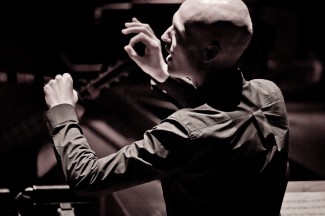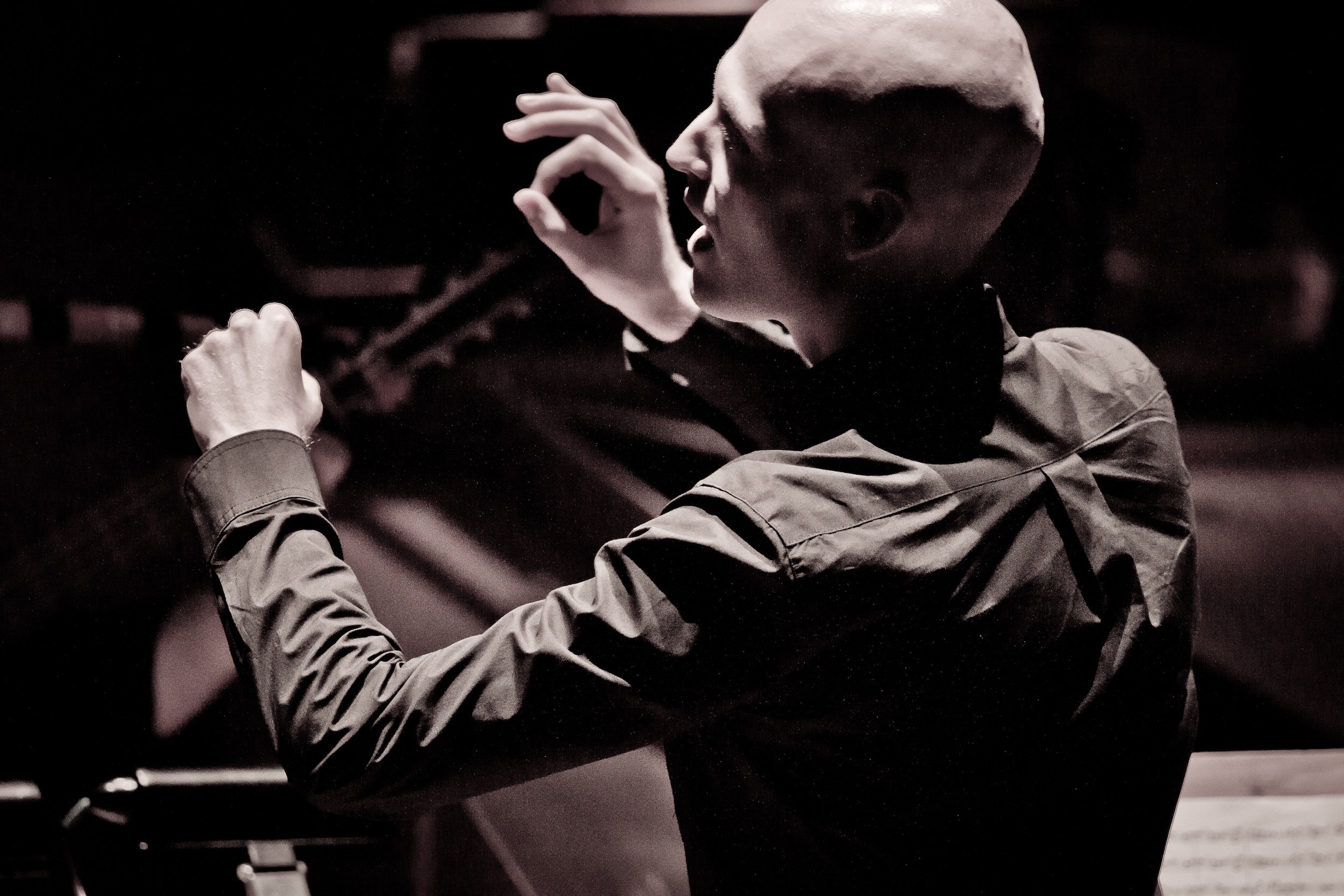Erin Helyard On Pinchgut’s Bajazet

It’s mid June in Sydney, and the cast and creative team of Pinchgut Opera have gathered to commence rehearsals for the winter production of Bajazet, RV 307, (1735), an opera in three acts by Antonio Vivaldi – or is it?
Bajazet is strongly enough connected with Vivaldi to be allocated an RV (Ryom-Verzeichnis) number – a reference to the catalogue of Vivaldi’s work compiled by the Danish scholar Peter Ryom. In truth, the opera is a pasticcio- a conglomeration of arias by various composers of the time, which Vivaldi combined with arias of his own, set to a libretto by Agostino Piovene. Delving further into the opera’s history, I discovered that Piovene’s libretto was based on a French tragedy by the 17th century playwright Jacques Pradon, describing events which took place in 1402 in the city of Prusa, in Bithynia, now Turkey. Pradon gave his play the title Tamerlano, or La mort Bajazet, (1675) which was translated into Italian in 1709. Immediately the story becomes more familiar as the opera Tamerlano also set by Handel (1724) and other composers, not so well-known today (Francesco Gasparini, whose opera premiered in Venice, in 1711, and the German-Italian cellist Nicola Francesco Haym whose version dates from 1724). It was a popular tale of the time.
Speaking to SoundsLikeSydney, Pinchgut Opera’s Artistic Director Erin Helyard made the observation that Bajazet will be something of a milestone for opera in Sydney as it is the first time that Australian audiences will hear a pasticcio at least in an operatic context.
Outlining the meticulous creative process in realising Vivaldi’s score, Erin Helyard describes hunting down the sole source of the manuscript which is held in a library in Turin. He continues “I was lucky enough to obtain a microfilm of it through an American University and it took me many hours of sitting at a microfilm reader photographing and editing each page – a fascinating exercise I do with all Pinchgut shows. I compare what I do to an artist who copies the work of another great artist to learn the process of creation – tracing every single note that Vivaldi wrote and every single word of the libretto. There is no better way to prepare for an opera than to form your own edition of it – I am continually humbled in the presence of Vivaldi. He was genius. He is now known more for his instrumental music but at the time he was best known for the more than 90 vocal and theatrical works that he composed.”
Erin Helyard is confident that audiences will be able to recognise the elements that Vivaldi wrote and appreciate the diversity of styles offered by the pasticcio. “Listeners who are familiar with works like Vivaldi’s Four Seasons will hear his craftsmanship and what he could do with our perception of time. The other arias are by three Neapolitan composers – Riccardo Broschi, who was Farinelli’s brother, Johann Adolf Hasse who was a German composer but was working in Naples and Gemini Giacomelli who wrote the very famous aria Sposa, son disprezzata. These three are less concerned with the perception of time and more about newer ideas like colour and vocal virtuosity.”
Incidentally, Hasse was married to the mezzo-soprano Faustina Bordoni, arguably the most popular soloist of the time who studied under Gasparini and sang in his premiere of Bajazet. It was a very small operatic world in the 18th century.
Vivaldi can lay claim to just over half of the opera’s 15 arias. Helyard describes a “wonderful tension” between the civilisation of Bajazet, the defeated Ottoman emperor sung by New Zealand born baritone Hadleigh Adams, and the new civilisation of Tamerlano, the Turko-Mongol conqueror, sung by American counter-tenor Christopher Lowrey. “In one respect,” continues Helyard, “Vivaldi’s work represents the old order of Bajazet and the inserted arias represent the new, younger composers. It’s not just a haphazard collection of different arias, it’s actually quite an interestingly curated set of music. Vivaldi chose the best work of Neapolitan composers for most of the evil characters.”
Pinchgut regulars will remember an electrifying performance from Adams in his role as Pollux opposite haute-contre Jeffrey Thompson as Castor, in the 2012 production of Rameau’s Castor and Pollux. Adams returns to Pinchgut to sing the title role of Bajazet, part of the coterie of singers whom Helyard describes with barely concealed excitement, as ” the crème de la crème of Antipodean talent in early music. Amongst the cast, we have singers who are up and coming opera stars who are now living in London – one of the things that Pinchgut likes to do is to bring back Antipodean singers so that Australian audience can hear them.”
Added to Vivaldi’s pasticcio is the rich layering of ornamentation and interpretation brought to the production by Helyard. For Helyard, who has dedicated years of study and a doctorate to historical performance practice, it is an opportunity to implement what he has acquired through practice, teaching and some one dozen Baroque productions for Pinchgut Opera. “I guess I’m bringing those very tensions that I’ve described. With the Vivaldi arias I’m encouraging a slightly different approach to ornamentation than I would with the inserted arias, and that actually befits the characters themselves. The ambitious characters sing these new Neapolitan virtuosic works whereas the characters who the audiences are invited to have some sympathy with, have a more different approach to the music and I’m trying to bring out those features that are inherent in the music and the libretto” he says.
Creating the instrumental soundscape under Helyard’s direction is the Orchestra of the Antipodes in a formation which replicates the size and composition of the band that would have played in the premiere at the Teatro Filarmonico of Verona during Carnival 1735. There will be strings, bassoon, harpsichord and theorbo. Reflecting the trend at the time for a strong baseline, there will two double basses, unlike previous productions which have featured just one double bass, and there will be two natural horns which Helyard claims as his favourite instrument, played by Darryl Poulsen, whom Helyard credits as being “Australia’s finest Baroque horn player.”
The majority of Helyard’s productions for Pinchgut Opera have been Australian premieres of rare Baroque works, which means he has rarely had the opportunity – or the desire – to see an existing production. His preference he says, is to work from a blank canvas. “I find that when I read a novel and have then seen a theatrical or a cinematic adaptation, I seem to have that in my head even though I try to get rid of it and so I deliberately don’t listen to recordings and avoid seeing a version so I can create an entirely new product – sometimes it’s inevitable – but at Pinchgut we really love to dig out these treasures that haven’t been done and to give Sydney audiences a completely new operatic experience because there are so many wonderful operas out there.”
Shamistha de Soysa for SoundsLikeSydney©
Pinchgut Opera’s production of Bajazet plays at the City Recital Hall on July 4, 5, 7 and 8.



